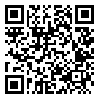Fri, Apr 19, 2024
[Archive]
Volume 11, Issue 1 (3-2019)
2019, 11(1): 45-56 |
Back to browse issues page
Download citation:
BibTeX | RIS | EndNote | Medlars | ProCite | Reference Manager | RefWorks
Send citation to:



BibTeX | RIS | EndNote | Medlars | ProCite | Reference Manager | RefWorks
Send citation to:
Abedini F, Keyvanpour M, Menhaj M B. Converting and Completing RDF Based Ontology into Fuzzy Ontology Using Neural Tensor Network. International Journal of Information and Communication Technology Research 2019; 11 (1) :45-56
URL: http://ijict.itrc.ac.ir/article-1-306-en.html
URL: http://ijict.itrc.ac.ir/article-1-306-en.html
1- Qazvin Islamic Azad University
2- Alzahra University , keyvanpour@alzahra.ac.ir
3- Amirkabir University
2- Alzahra University , keyvanpour@alzahra.ac.ir
3- Amirkabir University
Abstract: (1184 Views)
The fuzzy ontology is an ontology in which some of its aspects are fuzzified for a special application. Based on these aspects, there are different definitions of fuzzy ontology, but here, a new definition is proposed based on the aspect of the facts. In some applications, an ontology can be converted into a fuzzy one, and it may be incomplete. In this paper, a new method is introduced for the purpose of conversion and completion of fuzzy ontology based on the facts aspect. The ontology is a knowledge base in which there are many facts about the real world. The existence of uncertainties in facts of ontologies reveals the importance of fuzzy ontologies based on facts aspect. So far, many methods have been suggested to create a fuzzy ontology. Each of them focuses on some aspects to convert them into fuzzy. The focus of this paper is on facts of RDF based ontology. The first suggestion of this paper is a new algorithm in which with converting these facts into fuzzy one, fuzzy version of ontology is gained. In this algorithm neural tensor network is used as state-of-the-art in the relevant field. This network was used to complete an ontology, based on the existing facts of the ontology, but in this paper, it is used for converting and completing an ontology into a fuzzy one. For this purpose, a new definition of the fuzzy ontology for the aim of this paper will be proposed. Experimental results of the proposed method show comparing this method with similar works and then its advantages will be discussed.
Type of Study: Research |
Subject:
Information Technology
Send email to the article author
| Rights and permissions | |
 | This work is licensed under a Creative Commons Attribution-NonCommercial 4.0 International License. |




